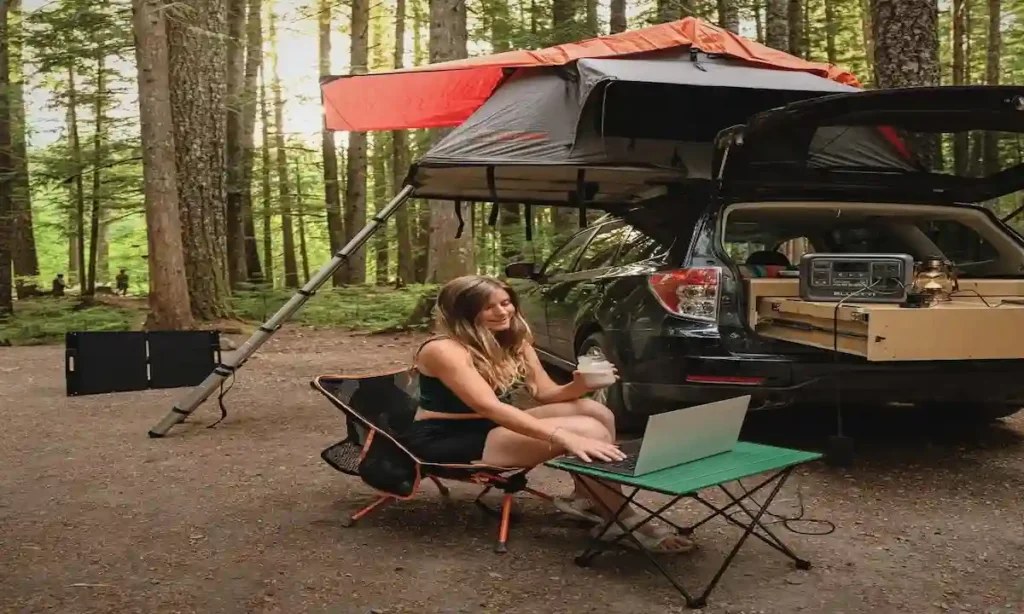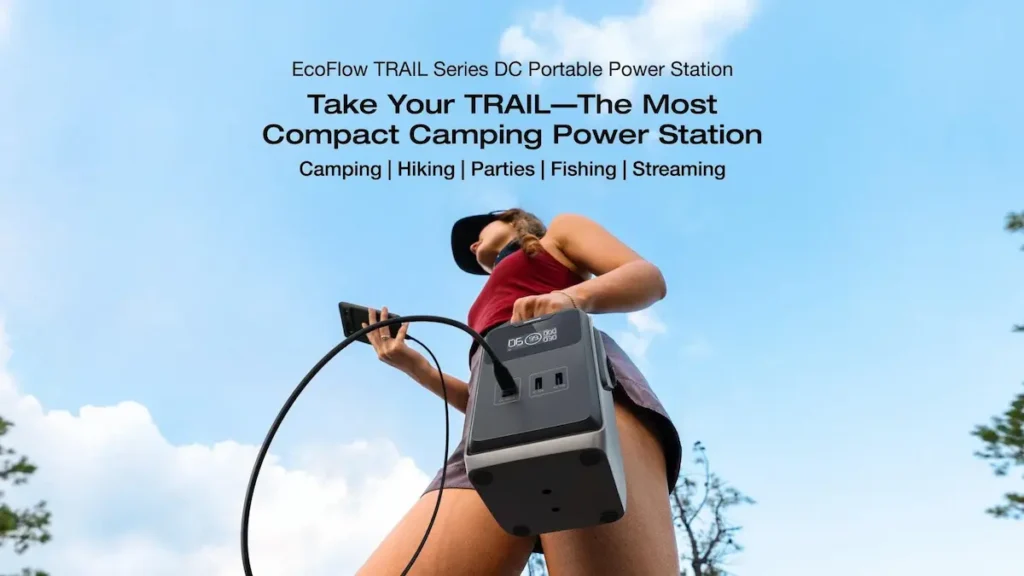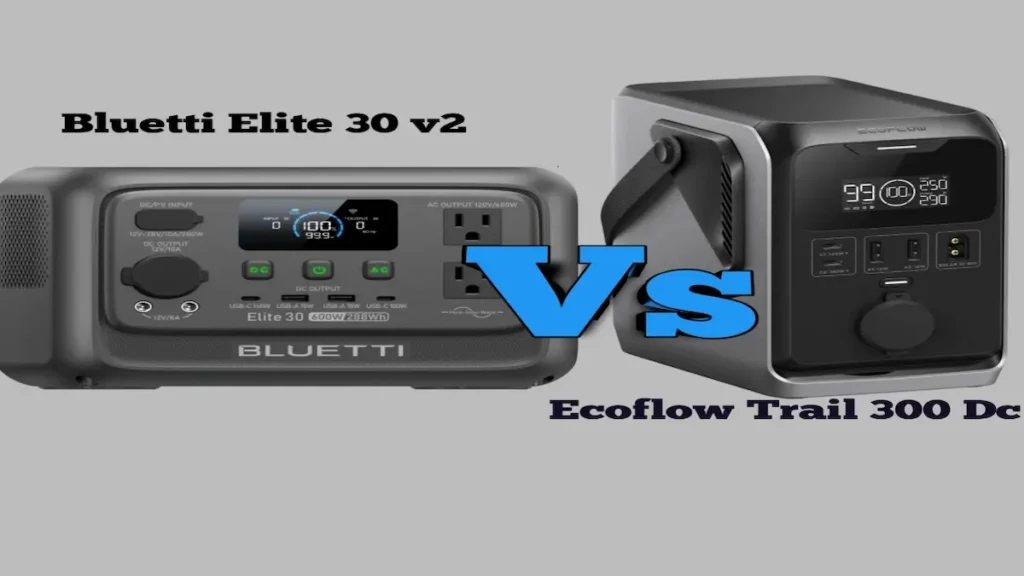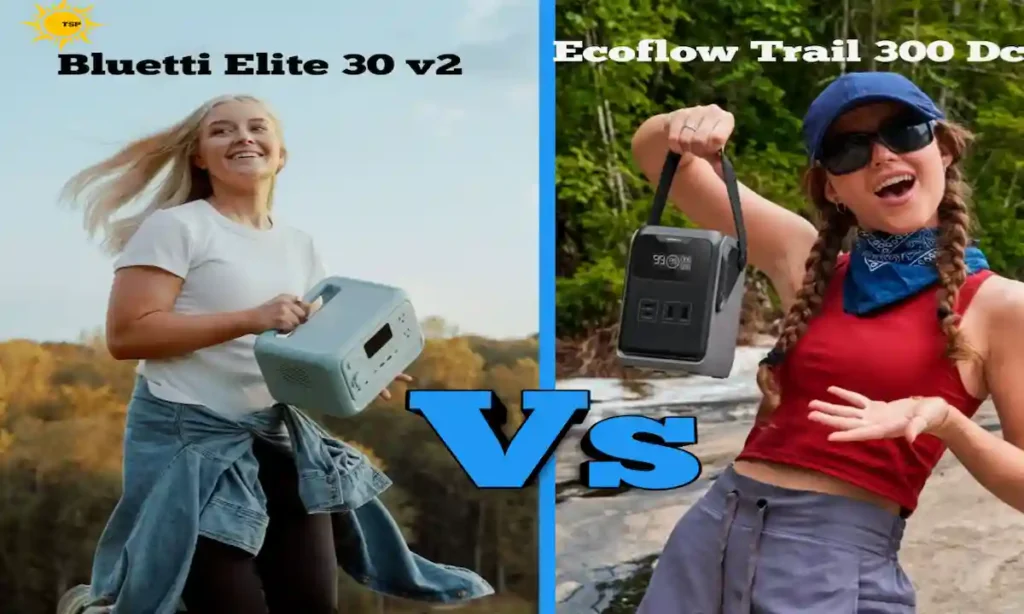Be it a power black-out, off-grid adventures, or just charging on the go-circumstances for reliable, portable power have never been more dire. The Bluetti Elite 30 V2 and EcoFlow Trail 300 DC represent two compact and powerful power stations that give you peace of mind with knowing that whatever happens to your precious devices, they will be running till eternity. But which one will really give you the edge in 2025? In this article, we thoroughly evaluate these two heavyweight contenders in portable power and pit them against one another to ascertain which better fits into your lifestyle.
In the context of rugged excursions, one might say that portable power stations have almost become a necessity. Off-grid living, emergency back-up, daily convenience, and more have made portable power stations or anything else that gets mobile power much more relevant today. Choosing lightweight, high power types or heavier ones that can allow for multi-use systems requires comparative knowledge about your usage, your appliances, and the features that mainly concern you.
Bluetti Elite 30 V2: Versatility for Life

Picture this: You’re deep in the woods for a weekend camping trip: your camera batteries are low, your phone is 10%, and a small fridge that’s humming keeps your food fresh. Otherwise, all this is impossible without a portable power station. Suddenly a luxury-a small, trustworthy source of electricity-becomes a lifeline.
Portable power stations were really made only for adventure lovers. These days, they are in demand for both off-grid living and back-up emergency in time of need, as well as for simple convenience in day-to-day life. Between the lightweight, super-efficient types and the more clever ones good enough to provide power for multiple appliances, locating the right source requires comprehension of your demands as well as your devices, along with those characteristics most on your wish list.
- If portability and reliability are top priorities for your outdoor setup, the BLUETTI Elite 200 V2 Review offers great insights into how Bluetti’s larger-capacity unit performs in real camping scenarios.
EcoFlow Trail 300 DC: Ultra-Lightweight Power Anywhere

If portability is absolutely the main thing you require, then the EcoFlow Trail 300 DC is definitely manufactured for you. Weighing only 4 pounds, it is for those times when heavy equipment is not an option: carried anywhere for hiking, camping, location filming-any activity where hauling extra weight is an absolute burden. To almost fill the gap, it still manages to pocket 288Wh of power, which is roughly equal to nine standard power banks.
Efficiency and rugged portability are where the EcoFlow Trail 300 DC outperforms the Bluetti Elite 30 V2, which sways more towards versatility. With pure DC output taking care of 90% gear compatibility, every watt of power goes directly to your devices-camera, tablet, or portable speakers-without wasting anything. This makes it a dream case for photographers, content creators, and just-trodden travelers in need of reliable DC power without dragging around the extra weight.
Designed to survive unconventional challenges, the Trail 300 DC is fire-resistant and drop-proof, while also giving some optional waterproof accessories, which means it can go pretty much anywhere without worrying about destruction. Thanks to multiple output ports, power can easily be shared among the entire crew, making sure everybody stays powered up even throughout lengthy trips.
- For readers interested in EcoFlow’s more advanced lineup, our detailed EcoFlow DELTA 3 Series Review: Specs, Performance & Off-Grid Powerhouse explains how the latest DELTA models build on the same innovation and efficiency as the Trail 300 DC.
How These Two Power Stations Perform When It Really Matters

Let’s put this comparison to practice:
- Scenario 1: You’re on your way to a secluded campsite where you need reliable power for your camera, lights, and mobile devices. The main source of power for all your essentials is the BLUETTI Elite 30 V2, offering steady performance and quiet operation throughout your trip. If weight is your main concern, the EcoFlow Trail 300 DC is a lighter alternative, though it won’t handle larger AC appliances as efficiently.
- Scenario 2: Power Outage at Home
During emergencies, AC power daily becomes the lifeblood on which devices run. This ensures that the Elite 30 V2 is powered UPS and your laptop and home networking equipment survive during a power outage. The key characteristic of the Trail 300 DC is the ability to keep phones and lights running, and it is not designed for AC loads, so Bluetti wins over in this case. - Scenario 3: Journey or Day Hike
The Trail 300 DC beats all in travelability. You can stuff it easily into a pocket without the weight of heavy equipment, and you can charge cameras, tablets, and phones throughout the day without having to carry an extra heavy device.
If you’re exploring more solar power options, check out our EcoFlow Trail Power Stations Review for an in-depth look at the full series, or dive into our BLUETTI Elite 200 V2 Review to see how it compares for camping and travel setups.
Head-to-Head: Bluetti Elite 30 V2 vs EcoFlow Trail 300 DC
| Feature | Bluetti Elite 30 V2 | EcoFlow Trail 300 DC |
|---|---|---|
| Battery Capacity | 288Wh | 288Wh |
| Output | 600W AC, 1500W surge | 300W DC only |
| Weight | 9.4 lbs | 4 lbs |
| Ports | 8 (AC, USB-C, USB-A, DC car) | Multiple DC & USB ports |
| Charging Time | 0–80% in 45 min (TurboBoost) | 0–80% in 45 min |
| Durability | LFP battery, 3,000+ cycles | Drop-proof, fire-resistant, optional waterproof |
| Best For | AC & DC devices, versatile use | Lightweight, DC-powered gear |
Lifestyle Fit: Which One You Should Choose?
- Bluetti Elite 30 V2: This is the model you need if you’re after versatility, AC compatibility, and the ability to power several devices at once. Perfect for families, RV travelers, and emergency preparedness.
- EcoFlow Trail 300 DC: Choose this if you want lightweight, portability, and good efficiency for your DC devices. Awesome for hikers, campers, and on-the-move content creators.
Both of those are meant for different classes of users, but one thing is certain: either one of the options keeps you powered and ever-ready wherever life takes you.
Why 2025 is the Year for These Power Stations
Off-grid living, roof-mounted solar energy, and mobile lifestyles continue to expand; portable power stations become an absolute must-have-the Bluetti Elite 30 V2 and EcoFlow Trail 300 DC are leaders in this category: high on reliability, efficiency, and usability.
- Bluetti Elite 30 V2: Durable multi-device power with AC capability.
- EcoFlow Trail 300 DC: Ultra-lightweight, rugged, and highly efficient DC-only power.
Both fit seamlessly to modern outdoor adventure, off-grid continuation, and emergency preparedness.
Buying Guide: How to Make the Right Choice
- Learn about your appliances: AC or DC? Small electronics or mini-appliances?
- Weight and portability are important: If you use it a lot carrying it or is mostly used in the house?
- Long-term thinking: LFP batteries last longer and are safer.
- Check the charge speed: Less downtime due to fast charging.
- Durability: Outdoor uses require rugged design.
- Want to explore more solar generator options before making your choice? Take a look at our Jackery HomePower 3600 Plus Solar Generator Review 2025: What Can It Power? for home backup, or read the EcoFlow Battery Review 2025 to see fast-charging and backup performance tested in real life. For a full comparison, check EcoFlow vs Bluetti vs Zendure to see which solar generator fits your home setup best.
Where to Buy
Ready to power your life on the go or off the grid?
Both the Bluetti Elite 30 V2 and EcoFlow Trail 300 DC are available directly from their manufacturers.
Both offer delivery worldwide, so you can check whether it’s available in your region and have it shipped right to your door.
Bluetti Elite 30 V2
Dependable AC & DC power with TurboBoost fast charging and a long-lasting LFP battery – great for home backup, in an RV, or working while on the move.
Buy here: Visit the official Bluetti Store
For the latest price, visit the Bluetti website.
Worldwide delivery available-check availability in your region.
EcoFlow Trail 300 DC
Lightweight, adventure-ready DC power made for camping, road trips, and filming on the go — small yet powerful enough to keep your essentials running for the whole day.
Buy here: Visit the official EcoFlow Store
For the latest price, visit the EcoFlow website.
Worldwide delivery is made available-check your area.
Frequently Asked Questions (FAQ)
1. Which is better — Bluetti Elite 30 V2 or EcoFlow Trail 300 DC?
Depending on what you want, it can go either way. The Bluetti Elite 30 V2 gives you much more flexibility with both AC and DC outputs, making it the ideal source for anything from laptops to small appliances. The EcoFlow Trail 300 DC is lightweight and efficient with pure DC power, which makes it great for travel. If you camp, hike, or film outdoors often, EcoFlow wins for portability; for home use or emergency backup, Bluetti takes the lead.
2. Can I use the Bluetti Elite 30 V2 or EcoFlow Trail 300 DC for off-grid living?
Yes. Both would be very effective in off-grid living. The Bluetti Elite 30 V2 produces a steady continuous output of 600W AC power, which can run laptops, lights, and small kitchen gadgets; fit for cabin or RV. The EcoFlow Trail 300 DC is much better as an off-grid option for short trips when intensive but lightweight, effective DC power is needed for cameras, drones, or phones.
3. How long do these power stations last?
The Bluetti Elite 30 V2 uses LFP (LiFePO₄) battery chemistry, resulting in over 3,000 cycles of recharging, that is nearly a 10-year life span under normal usage. The EcoFlow Trail 300 DC also utilizes long-lasting lithium technology but slightly rated fewer cycles most ideal for travel and moderate use.
4. Can I recharge them using solar panels?
Most definitely. Both models have compatible solar charging capabilities. With an auxiliary portable solar kit, either model converts into a renewable self-sustaining power system — great for camping, RVing, and emergency reserves at home. Check the Bluetti or EcoFlow official solar accessories for optimal charging speed and compatibility.
5. Are Bluetti and EcoFlow reliable brands?
Yes, both brands are known names in the industry of portable power stations. Bluetti is recognized for high-quality and very long life LFP batteries while EcoFlow focuses on the cutting-edge nature of their design and on ultra-fast recharge systems. All of that stems from the strong communities, customer supports, and warranty options.
6. How fast will I be able to recharge them?
Both models reach 80% charge in about 45 minutes, thanks to their high input speed. The Bluetti Elite 30 V2 includes TurboBoost technology, whereas fast DC input minimizes waiting time in the EcoFlow Trail 300 DC. You can recharge through solar, in a vehicle, or by plugging into the wall.
Final Thoughts
Both the Bluetti Elite 30 V2 and EcoFlow Trail 300 DC Portable Power Station offer unique advantages. The Bluetti holds its own when it comes to versatility and AC support, while the Trail 300 DC wins in terms of portability and ruggedness.
By knowing your own power need and lifestyle, you will be able to choose the device which keeps you powered, connected, and worry-free, either at home or during adventures.
Author
Top Solar Picks, founded by John, a Solar Energy Writer and Researcher with over 12 years of experience in renewable energy, is dedicated to helping homeowners and businesses make informed, data-driven decisions about solar power. John’s expertise and research pr...

